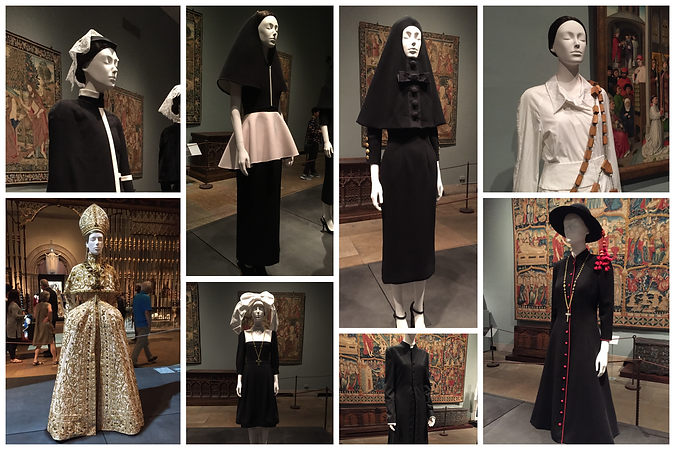Chapter 4
Innovating Religious Dress

Chapter Summary
This chapter examines how fashion designers used Catholic religious dress—the attire of priests, monks, and nuns—to inspire and innovate their designs. This ecclesiastical trend expanded fashion’s use and materialization of religion, constituting another step in placing the divine on designer garments. The chapter first addresses how the uniform of Catholic religious became fashionable in the mid-twentieth century. It then investigates the work of specific designers, such as the Fontana sisters, Rudi Gernreich, Cristóbal Balenciaga, and Walter Holmes, who catapulted this trend to popularity in the late 1960s amid a changing American religious landscape. The chapter examines the re-emergence of this trend in the late 1980s and early 1990s. In both time periods, the construction of the designers’ personal biographies and their fashion aesthetics fostered the celebration of some collections and the criticism of others. The chapter concludes with an emphasis on how fashion focused people’s attention on the visual and material experience of religion.
Teaching Resources

Religion on the Runway
“The show begins, the music goes on and you feel like history is being made.”
John Duka, “In Fashion, the Show’s the Thing,” New York Times March 28, 1984, C12.
Why have designers been inspired by Catholic religious dress for so long? How and why have they adapted these religious "uniforms"? Beyond the garments themselves, how do runway shows enhance this recurring ecclesiastical trend?
Chapter 4 “Innovating Religious Dress” analyzes how fashion designers and the fashion industry more broadly incorporated the religious dress of Catholic priests, monks, and nuns into their designs. This trend became quite popular in the late 1960s following the reforms of Vatican II (1962-1965). Since then it periodically emerges as a design trend, as discussed in Chapter 4. What the Chapter cannot adequately describe and show you are the ways this “ecclesiastical” trend not only shaped fashion design(s), but also infused runway performances.
A runway show involves more than the garments, hair, and makeup. It is akin to a theatrical production involving music, lighting, and props. In terms of creating a runway show, designer Gianfranco Ferré (1944-2007) stated that after finishing his collection, which took from 2-6 months, he would “begin working on the look of the show.” He described the level of detail it took. “I wanted it to look as if the models were going out at night. So we lowered the light, the music became very slow and we added smoke. But you cannot do the music until you see the clothes.” Ferreé also designed the runway shape, created the choreography, and more.
While Stylistic Director of Christian Dior, the Italian Ferré’s Fall/Winter 1993-1994 collection was entitled “The Keys to Heaven.” The show included large cross jewelry, keys (a symbol of St. Peter), and outfits inspired by the Catholic priest’s cassock. Then compare Ferré's collection for Dior with that of Krizia's from two years earlier. As you watch both videos, consider:
How does seeing these priest-inspired outfits within the context of a larger collection affirm, complicate, or challenge your interpretation?
How and why does the runway matter in fashion?
How would you compare and contrast these two interpretations and presentations of Catholic religious dress?
How does seeing these runway shows enhance your understanding of Chapter 4?
Christian Dior Autumn/Winter 1993 1994
Krizia Fall 1991/1992
Photo and Video Credit:
Photo Collage: Photographs taken at the "Heavenly Bodies" exhibit at the Metropolitan Museum of Art. Photographs by Lynn S. Neal.
Runway Image from Victoria Beckham’s Ready-to-Wear Autumn/Winter 2011-2012 Collection shown in NYC. Camera Press Ltd./Alamy Stock Photo.
Videos from The Fashion Channel. You can subscribe here.